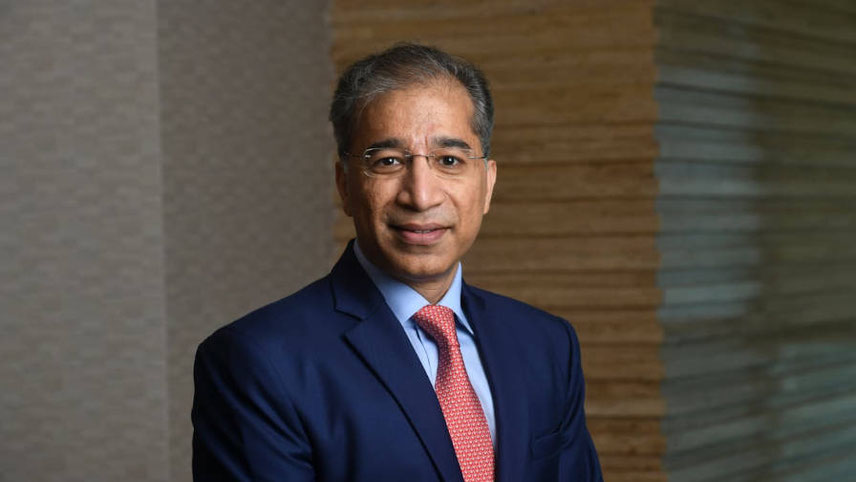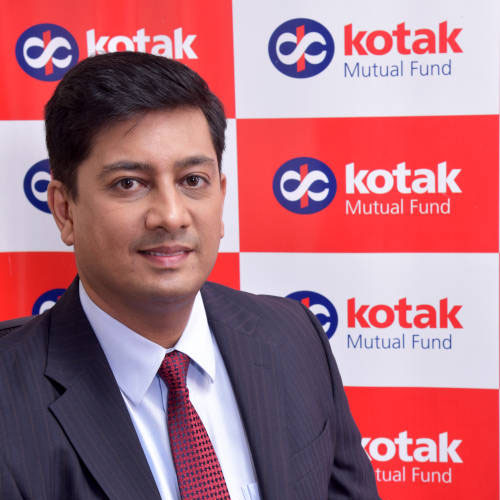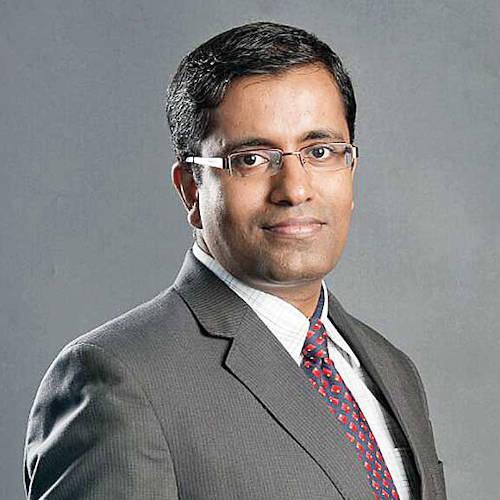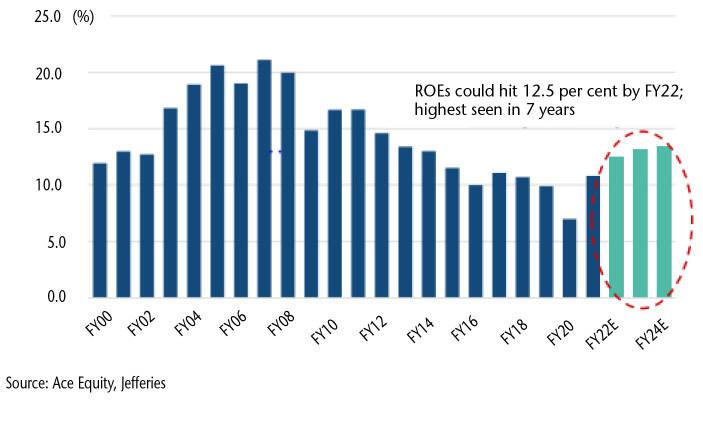-

Agarwal: seeing a cyclical upturn
“We see the acceptance of MFs, particularly equity and balanced funds as a vehicle for long term wealth creation by the investors. Also, through the cycles, the average investor is now more mature in dealing with the ups and downs of the market. Participation from non-metros is also increasing steadily. Digital is really catching up as the more accepted way of doing transactions in MFs. While ETFs have gained market share from a low base, investors continue to put money in actively managed schemes,” says George Heber Joseph, CEO, ITI Mutual Fund.
The trend in draft filings with SEBI for new mutual fund offer proposals indicated a preference for passive funds which accounted for 77 per cent of all filings during the year till December 2021, building upon the trend in the year 2020 despite strong outperformance by actively managed funds. Another trend that showed continued momentum was filing for global funds.
Agarwal believes that India has entered a cyclical upturn and may see a repeat of the 2003-2010-type economic revival with “the fastest GDP growth among Asian countries. Stronger and well-capitalised bank balance sheets, deleveraged corporate balance sheets and a long-awaited housing sector revival sets the stage for strong revival in growth and corporate profitability. Given the historically low interest rates, we do not expect a marginal hike in rates to impede growth prospects. As markets open up and Covid-led bottlenecks ease, we expect a revival in demand as well as an uptick in corporate risk appetite leading to a revival in private CAPEX by the year end.”
A strong trend
Talking about the future on the market front, retail participation is a strong trend and may continue. “We believe that the year 2022 will be the year of selectivity. We expect that compared to the widely distributed broad-based rally last year, 2022 will be conducive for bottom-up stock selection,” adds Agarwal who expects markets to incrementally reward quality and price sensitivity for companies that are poised to participate in the upcoming economic revival.
“Our investment process, QGLP (Quality, Growth, Longevity and Price) is expected to help us optimally capture the upside. We are positive on the leading banks and insurance companies, consumer discretionary sectors, including autos, IT services, new age digital players and China Plus One beneficiaries, and expect them to outperform in 2022.”
Over the medium term, as expected, the domestic economy will gain further momentum. “We anticipate strong recovery in the investment cycle. In line with this, we are overweight on sectors that are investment cycle beneficiaries such as industrials, engineering and capital goods, and banking & financials. We are also positive on the chemicals sector, given the strong growth momentum and the China Plus One opportunity in the global market,” adds Upadhyaya.
-

Upadhyaya: increasing awareness
Bhobe feels that the banking sector looks reasonably valued and has not got its due, and that credit growth revival and risk from fintechs are key issues which should get more clarity in 2022. Capital goods and manufacturing look promising especially as company after company indicate a decade-high trajectory of order books and enquiries. Digital spends are here to stay but valuations reduce the scope for sectoral alpha in IT services. “Having said that, the margin trajectory in 2022 can provide some upside surprise. Real estate is firmly on the recovery path and fast becoming a consensus view,” adds Bhobe.
Pick up in capex cycle
“Many of the leading banks are emerging stronger from the previous downturn and are still available at reasonable valuations. Also, a cyclical turnaround is expected across the auto sector including CVs and parts of the sector could do well. As could sectors with a favourable global cycle such as refining/OMCs. Good quality businesses with robust growth across sectors such as pharma, consumer durables, IT and other assorted sectors should also do well,” says Misra.
“Over the next two-three years, we expect domestic cyclical sectors such as industrials and capital goods, real estate and cement to do better. We feel the capex cycle is due for a pick-up in India after a decade of weak capex. Also, better export competitiveness is improving the prospects of the manufacturing sector. We expect large cap banks to perform better while the recovery in mid cap or MSME-focused banks might come with a lag. Within defensives, we expect the pharma sector to perform better; IT as a sector will continue to do well, though returns will be more in line with earnings growth after a strong run-up in the last 18 months,” adds Joseph.
Large banks are very well placed on the credit quality front. “We can also see credit growth starting to pick up. Such banks have cleaner balance sheets after provisioning and are available at attractive valuations relative to long term averages and also relative to other market segments. Banking is a leading indicator during periods of economic revival and we expect strong growth in this segment.
We see the environment turning structurally positive for insurance companies and expect traction in earnings and cheap valuations,” adds Agarwal, who sees the auto sector that witnessed multiple headwinds due to lockdowns, poor replacement cycles, input cost hikes and semi-conductor shortages, now recovering amid a strong uptick in demand, lower input costs as well as improved semi-conductor availability – all this will drive strong growth in profits of the sector.
-

Joseph: large cap banks to perform better
Agarwal also places his bets on IT services companies that have witnessed unprecedented demand buoyancy led by multiple factors including digitisation and cloud migration. India IT services companies are in a sweet spot and “we expect a pricing uptick as well from 2022”.
Digital players have been the biggest drivers of disruption and growth in two of the world’s biggest economies already, viz US and China. “We are now witnessing listings of some of the leading digital players in India as well and many of them are likely to witness a decade of high growth combined with the emergence of strong profitability,” sums up Agarwal.
Finally, the new year 2022 will possibly be more stock-specific-driven with less width in the market than what the market witnessed in the previous year. Thus, selecting stocks judiciously for one’s portfolio will be important.
And yes, FY22 will see interest rates rising and market liquidity coming off, which may raise some questions about the valuations of companies where cash flow is far in the future as the discount rate may increase. Also, increasing interest rates with a moderate rise in inflation could be positive for capital formation and financial companies.
-

Growth in ESG
The growth in environmental, social and governance (ESG) investing has accelerated over the past few years, and the corpus of professionally managed portfolios which include key elements of ESG factors, exceeds $17.5 trillion globally. In India, ESG is another area of interest. ESG-focussed funds have more than Rs12,000 crore of assets now.
Mirroring this trend, the growth of ESG-focused traded investment products which are available to investors, exceeds $1 trillion and continues to grow at a fast pace. ESG investing has gained interest recently from the public sector as well. Central banks across countries have expressed support to spur the transition of financial systems toward low-carbon economies.
“The growing investor interest in ESG factors reflects the fact that it can affect the long-term performance of issuers while reducing the propensity for controversies that erode stakeholder trust and should therefore be given appropriate consideration in investment decisions. Keeping the growing demand in view, the industry is creating more products which are related to ESG ratings, indices, and funds. ESG indexes, equity and fixed income funds and ETFs are now manifold in number and are increasing quickly. Many options are available; low-risk products such as money market funds, passive smart beta ETFs, and even hedge funds are a few which involve ESG investing,” says Pradip Seth, founder and CEO of S-Ancial.






































